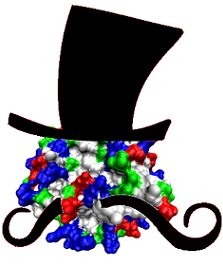The Histone Code
Lately there’s been a lot of buzz within the scientific community about a “Histone Code”. What is it and why is it important? To understand the importance of this code, we need to set our focus at the origin of this topic. The story starts off with DNA.
The genome, comprised of DNA, is arguably the most important molecule in a cell. Encoded within a DNA molecule are the endless permutations of a repeating code comprised of only four repeating elements, the genome contains the all information needed for that organism to thrive and function; it represents the instruction manual encoding all the instructions on how to build the all the necessary machinery that will be required throughout the organism’s lifetime. The magnitude of this is simply astounding. The situation with DNA is analogous to having every instruction booklet required to build an airplane on one piece of paper, but the paper’s dimensions is that of an extremely long fortune cookie fortune; simply put DNA is a long molecule. Too long, in fact, for a cell to keep it laid straight and still keep it inside the cell. So the cell does the same thing that we do when we have a long piece of rope or unruly string of Christmas lights; the DNA is kept rolled up until it is needed. To accomplish this the cell utilizes a set of proteins, called histones, to start this process of condensing the DNA. In fact the cell uses to so many histones to do this, that it is one of the most prevalent type of proteins in a cell.
Proteins, like DNA, can be thought of as strings (albeit much much smaller) of repeating sequences of different amino acids. These strings of amino acids are almost always folded into different structures. Sometimes proteins are “woven” into sheets, other times into these globular structures as if the string had been tied into a large knot. Interestingly enough, it is that the order of the amino acids themselves that is the main determinant for what kind of shape the protein will form into; this is the case for histones. The sequence of amino acids for a histone causes it to fold into a predictable shape. There are a few different kinds of histones in cells, each with a unique sequence of amino acids and therefore a unique shape. From a cell’s histone arsenal, it utilizes a few different histones to create a multi-protein structure that resembles a neat barrel-like structure that DNA can wrap around; this is referred to as a nucleosome.
Once the DNA is rolled onto these histones, the cell still needs an easy method to lock the DNA away (so it cannot be unrolled) and to release it (so it can read the encoded blueprints); this process is accomplished by histone modification. These modifications are relatively small compared to the overall size of the histone, but they have profound effects.
A cell might modify a histone by adding an acetyl group, a small functional group, to it. In some instances, this modification causes the histone to loosen its grip on the DNA; sometimes it causes a different histone to tighten that grip. Now it might seem a little weird that the same modification causes opposite results. But returning to this “proteins are like strings” analogy, imagine what happens if you take the two ends of a knotted string and pull. What happens? Sometimes the knot gets tighter, other times the knot unravels; the outcome depends on what kind of know it is. A similar situation is occurring with these histones, the result of the modification depends on the structure of the histone.
This is what is the term “histone code” refers to, the attempt to decipher how modifications result in changes in DNA accessibility. Studying the outcome of histone modifications and how they effect the interaction between DNA and histones is currently a hot area of research. The implications of this effect are significant, if a segment of DNA cannot be removed from a histone, the blueprints encoded on the sequence of DNA cannot be read and the cell will miss out crucial pieces of instructions (imagine a plane without a left wing). On the other hand, if a histone cannot hold onto a DNA segment, that segment will be read inappropriately causing to the cell follow the instructions (imagine a plane with extra wings sticking out at odd angles of its body). This is why the histone code is so important; it acts a set of mechanisms that allow the cell the to control when the message from a DNA segment is enacted upon. Histone modifications don’t change the information in a piece of DNA, they just regulate if the message can be read or not.



2 comments:
An update on the histone code. This blog post was intended as an introduction to this concept utilizing a few unique (in my mind) analogies. While outside the scope of my article, the situation is much more complex, as is often the case in science. While reading a Nature Article, a publication stated that "This concept [the histone code] was a most useful starting point. But it is increasingly recognized that the constituents of chromatin, and nucleosome structure, position and modification, are highly complex." The article can be found in the Aug 2007 copy of Nature.
Good words.
Post a Comment